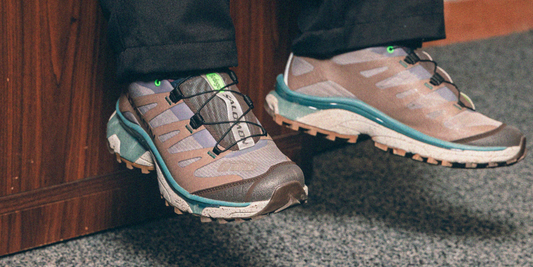Kumanokoido, a mashup of the Japanese words for 'bear cub’ and 'water well' is the name given to the collection of hand-crafted teddy bears created by Tokyo native and Brooklyn based creator, Junichi Nakane.
Each Kumanokoido bear features an individual design crafted from a variety of textiles, including colorful, West African wax print fabrics, vintage clothing and camouflage patterns. The unique nature of each bear serves as an expression of Kumanokoido's wish to make friends and connect people throughout the world. Kumanokoido has collaborated with Bodega on three occasions, the most recent being his bear made from Bodega private label deadstock in which all profits will be donated to the National Wildlife Federation.
Q&A
So, let’s start at the beginning. What led you to this craft?
I traveled to Mali back in December 2011 and met many good people, some of whom are still friends today. Back then I just wanted to do something to stay connected to the people who welcomed me. That's how the water well project started. I wanted to come up with a way to raise money for the well while doing something fun or creative instead of doing a charity or donation. I was inspired by Polo Bear and tried to make my own teddy bear using wax print fabric. It was a colorful and vibrant material that I saw people wearing daily in West Africa. I sold the first 15 bears at the Brooklyn Flea and they sold out immediately. I thought I was onto something so I wanted to continue.
Where do you source your materials?
I use random materials. I started with wax print and then camouflage since I'm into it and have been collecting them from all over the world. Some materials are also just from different places and countries that I've visited and that have some back story. Sometimes clients send me materials with a personal connection and want something memorable. I've also been exploring vintage, denim and tech materials like Gore-Tex, hi-viz and reflective.
Have you ever made any other kind of stuffed animal?
I started making fish and am working on something with four legs right now.
What do you do in the planning stages? Does it start with a specific idea of a fabric? Do you start with the fabrics on-hand and go from there?
Strategic freestyle. I first pick the material and then I pretty much freestyle from there. It's like a puzzle and there's a lot of Wabi Sabi going on, but I always try to have a story behind each bear.
What vision did you have in mind when you approached the bears for Bodega?
I tried to find the fun details in the garments and apply them in a way that gives each bear a unique personality. There's some focus on the colors, seams, patterns, pockets, embroidery and the label.
Tell us about the materials that were used on this project?
On this project, I got to play with flannel shirts, hoodies and sweatshirts from Bodega.
How would you say this particular project differs from previous work?
My first project with Bodega was back in 2014. That was a pretty early stage for my bears. With Bodega's 15 year anniversary this year, it feels good to be a part of that.
What inspires you?
My intent is always to do something that gives me good, positive energy. I do what I can do within my own capacity but the goal is to have fun and stay creative.
How many bears or projects have you created so far?
I've probably made over 1,500 bears by hand so far.
What is the weirdest one you ever created?
I made a bear out of a reusable Shoprite grocery bag. The material was challenging but came out fun.
What do you do if you ever run out of fabric for a product before the project is finished?
It has never happened and I hope it won't happen.
In many ways, this is upcycling unused scraps of fabric to make. Do you view it like that?
I've been using a lot of camo uniforms or vintage clothes in the bears and I wasn't really conscious about all of that when I started. But lately, people are talking about that more and I started feeling more connected with that perspective.
In your mission statement you mention how these bears connect people and friends. Can you go into that a little...
Those bears have been adopted in over 30 different countries and across six continents. Once in a while I get to see photos of random people in random places in the world where the bears have found a happy home. That always makes me smile. Also the bears have connected me with so many good people and sometimes it leads me to some fun projects. It all comes from a good vibe.







